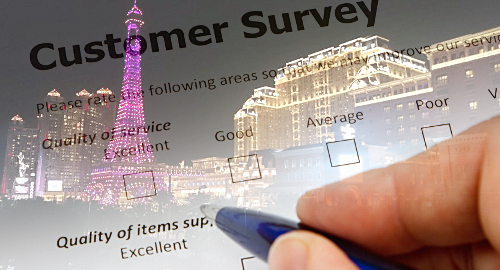 Macau welcomed a higher number of tourists in 2017 but a smaller slice of this tourist horde came away with a good impression of the world’s top gambling hub.
Macau welcomed a higher number of tourists in 2017 but a smaller slice of this tourist horde came away with a good impression of the world’s top gambling hub.
On Friday, Macau’s Statistics and Census Service (DSEC) released the results of its Q4 and FY17 visitation satisfaction surveys, and the figures make for sober reading for the special administrative region’s hospitality industry.
First the good news: total visitation improved 5.4% to 32.6m in 2017, and total visitor spending (excluding gaming) hit MOP61.32b (US$7.6b), up 16.4% from 2016. By way of comparison, Macau’s 2017 gaming revenue was up 19.5% year-on-year to MOP 265.7b.
Now the bad news: overall visitor satisfaction with Macau’s hotel services and facilities slipped 4.2 points to 85.9% while satisfaction with travel agencies fell 14.6 points to 70.7%. Gaming facilities weren’t spared the satisfaction erosion, falling 10.3 points to 73.9%.
Macau Responsible Gaming Association president Song Wai Kit told the Macau Daily Times that the declines were in part due to understaffed local companies using fewer employees than required to handle certain tasks and services.
Song also suggested that poor transportation infrastructure likely contributed to the dissatisfaction, particularly in the casino-heavy Cotai region, which has welcomed several sprawling integrated resorts in recent years.
Per capita visitor (non-gaming) spending hit MOP 2,072 ($257) in the last three months of 2017, up 13.2% from the same period in 2016 and up 14.2% from Q3 2017. For the year as a whole, per capita spending was up 10.5% to MOP 1,880.
Mainland China visitors spent significantly more (MOP 2,417) in Q4 than visitors from Japan (MOP 1,929), Singapore (MOP 1,895) and Malaysia (MOP 1,809), although all three of those market’s visitors improved their year-on-year scores. Shopping comprised nearly half (47.7%) of all non-gaming spending, more than spent on accommodations (24.4%) and food & beverage (20.2%) combined.